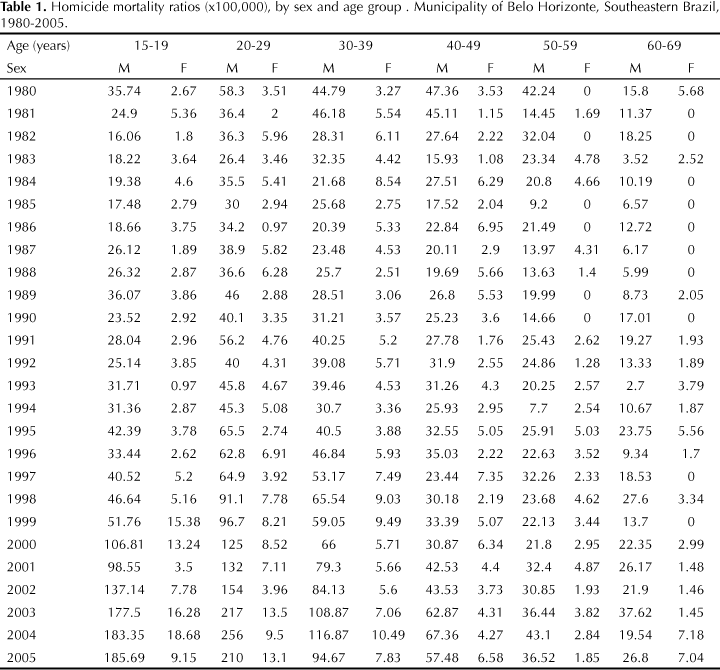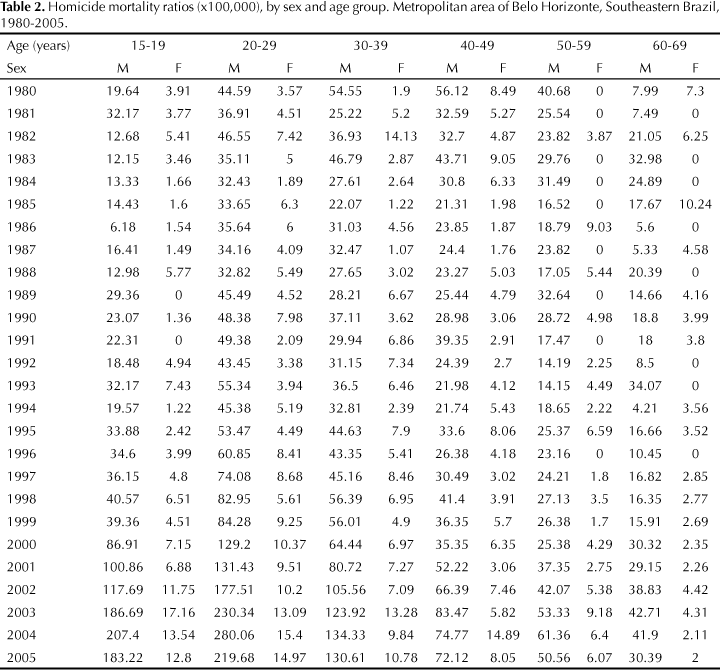OBJECTIVE: To analyze the evolution of homicide mortality rates in Belo Horizonte and its metropolitan area, Southeastern Brazil, from 1980 to 2005. METHODS: Deaths by homicide were obtained from the SIM (Mortality Information System). Population estimates by sex, age group and calendar-years were obtained from the Brazilian Institute of Geography and Statistics (IBGE). The specific mortality rates for sex and age groups were calculated annually for each geographic region. The trends analysis was carried out using polynomial regression models for time series data, with a significance level α <0.05. RESULTS: There were high homicide mortality rates in Belo Horizonte and the metropolitan area, principally amongst males. Secular trends showed an accelerated growth of the rate ratios in both sexes and in almost all age groups, most evidently from the beginning of the 1990s in the metropolitan area. CONCLUSIONS: The results show the need to implement organized public policies for the control of violence. Investing in education and guaranteeing access to employment are recommended for the control of the accelerated increase in homicide mortality, principally among male youth residents of the metropolitan area.
Homicide; Mortality; trends; External Causes; Metropolitan Zones; Time Series Studies






